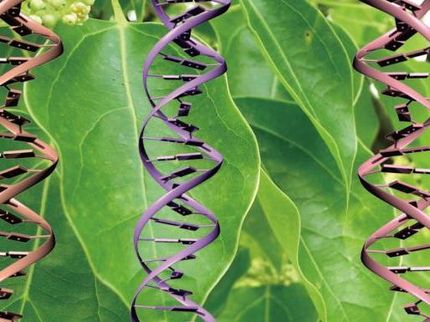Rampant helper syndrome
Advertisement
The Archaea are single-celled organisms and a domain unto themselves, quite apart from the so called eukaryotes, being bacteria and higher organisms. Many species live under extreme conditions, and carry out unique biochemical processes shared neither with bacteria nor with eukaryotes. Methanogenic archaeans, for example, can produce methane gas out of carbon dioxide and hydrogen. The underlying chemical reaction, a reduction, involves the cofactor known as F0 or F420 which is the tiny molecule deazaflavin. It has previously been found only in methanogenic bacteria, and has accordingly been considered the signature molecule for those species. A research group working with Professor Thomas Carell, however, has now shown that this cofactor is also common in eukaryotes, where it performs an entirely different function: deazaflavin is involved in DNA repair processes.
Methanogenic bacteria have quite an exceptional task to accomplish: They have to produce methane. In terms of chemistry, this is no mean feat. Methane production is currently one of the most hotly pursued goals for the purposes of renewable energy. It is also a serious greenhouse gas. Enzymatic methane production involves the tiny molecule deazaflavin, known as cofactor F0 or cofactor F420. This cofactor is stored inside special proteins of methanogenic bacteria, and is essential for methane biosynthesis. Cofactor F0/F420 is a small molecule that, until now, has only been found in methanogenic bacteria. It is regarded as the signature molecule for such species.
"We have now shown that this picture is not entirely true," Carell says. "This cofactor is significantly more widespread in the biosphere than previously assumed. Most importantly, it also occurs in higher organisms, the so-called eukaryotes. But in these, it performs a completely different task." As the researchers were able to demonstrate, the cofactor is involved in DNA repair processes. Specifically, repair of UV damage to the DNA molecule. Plants and many other organisms that are exposed to intense sunlight must cope with an enormous degree of damage to their genes. To repair those mutations, they need the help of complex enzymes. These photolyases in turn require cofactor FAD – aka vitamin B2 – to accomplish this function. It has long been suspected that these crucial enzymes require yet another cofactor to provide the energy that DNA repair requires.
"We have now shown that, in many organisms, this cofactor is F0/F420," Carell reports. "This molecule has been conclusively detected in DNA repair enzymes of Drosophila melanogaster, the fruit fly. Not long ago, another research group even postulated that F0/F420 is co-responsible for DNA repair in plants. Our view of cofactor F420 as a signature molecule for methanogenic species has therefore radically changed: this cofactor is widespread and it is essential for both methane synthesis and for DNA repair."
Original publication: Andreas F. Glas, Melanie J. Maul, Max Cryle, Thomas R. M. Barends, Sabine Schneider, Emine Kaya, Ilme Schlichting, and Thomas Carell; "The archaeal cofactor F0 is a light-harvesting antenna chromophore in eukaryotes", PNAS 2009.

























































